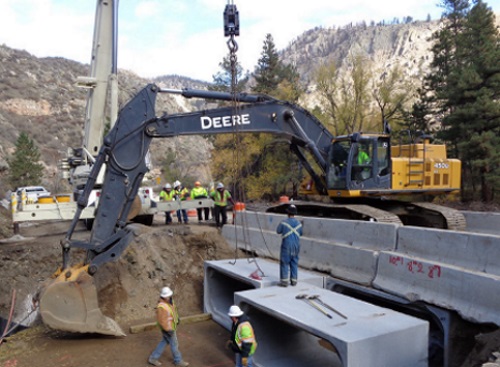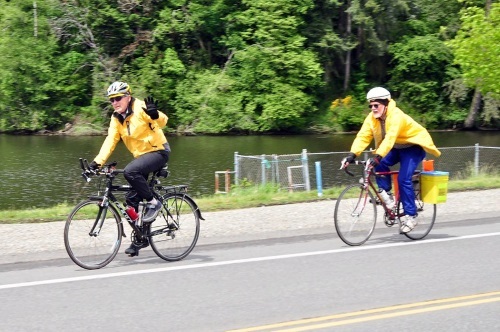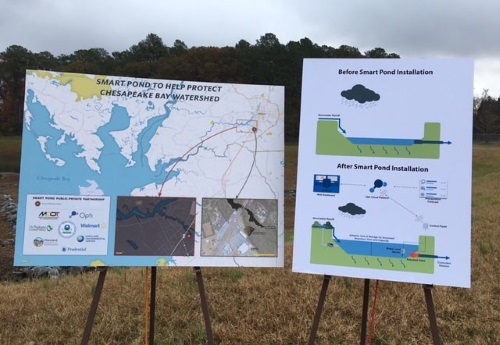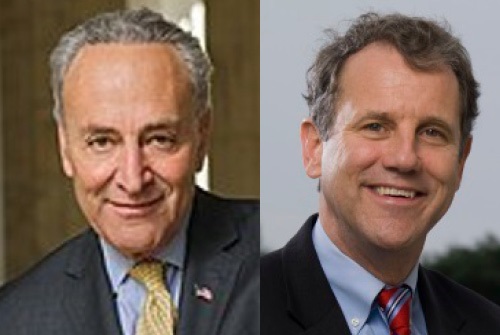The National Cooperative Highway Research Program (NCHRP) released a report in February 2021 highlighting several state agency efforts to incorporate Green Infrastructure (GI) solutions into transportation drainage and landscaping design.
The American Association of State Highway and Transportation Officials helped research and publish that report – entitled Landscape Design Practices for Roadside Water Management: Domestic Scan 16-02 – as part of the joint AASHTO and Federal Highway Administration’s NCHRP “Domestic Scan Program.” That program helps speed up the transfer of information and technology among transportation agencies.
This article is the second of a two-part series – focusing on GI recommendations for state transportation agencies.
How and where can state departments of transportation incorporate Green Infrastructure or “GI” practices into their ongoing infrastructure programs? A four-day workshop organized by the team that crafted the Landscape Design Practices for Roadside Water Management: Domestic Scan 16-02 report came up with eight recommendations that can help build a successful GI program with long-term results, across varied climates, geographies, and topographies.
[Above photo by Colorado DOT]
The first is to define what GI is, as the workshop participants discerned at the outset that there is no nationally recognized standard GI definition – and an agreed-upon definition is needed to support grant funding consistency, federal eligibility, categorization of GI projects, design approaches, and recognition in the transportation realm.
As a result, the report team recommended that AASHTO, in conjunction with FHWA, develop a national GI definition as it relates to transportation for consistent adoption throughout the country – one also be incorporated into “A Policy on the Geometric Design of Highways,” which is known colloquially as the “Green Book.”
Steve Sisson – a design resource engineer with the Delaware Department of Transportation and member of the AASHTO Technical Committee on Hydrology and Hydraulics – believes there are several other areas where more GI information could be included in AASHTO documents.
He pointed to two current AASHTO publications – Highway Drainage Guidelines (HDG) and Drainage Manual (ADM) – currently undergoing updates to incorporate GI and new stormwater management (SWM) systems earlier into the infrastructure design process. Those particular areas include advancing setting-based site assessment, runoff reduction opportunities, and public private partnerships.
“The latter also will include support for more watershed-based approaches that minimize long term maintenance costs while increasing return on investment for public and private dollars,” Sisson explained.
“[Those] updates will draw on additional studies like NCHRP Research Report 840, ‘A Watershed Approach to Mitigating Stormwater Impacts,’ and NCHRP 25-60. ‘Watershed Approach to Mitigating Hydrologic Impacts of Transportation Projects,’” he said.
Sisson added that the GI section would also include an expanded generic Best Management Practices or BMP library, applicable over a wide range of regulatory jurisdictions, incorporating maintenance and construction recommendations.
The other recommendations made by the report team include:
- Maintenance: Considered the most important project-related category identified for the success of GI, the teams believes in integrating maintenance plans incorporating GI elements into all transportation projects. However, training is needed to ensure proper workflow and actions for the GI solutions. Personnel with the right expertise and equipment are essential, along with policies, procedures, guidance, and manuals with standard operating procedures and maintenance plans to ensure long-term consistency in practice.
- Watershed Approach versus Project Site Approach: GI solutions are often not available as an option when constrained by right of way or ROW on project sites. State DOTs typically obtain ROW in linear segments in alignment with the roadway, which can limit the opportunity for some GI practices, such as bio-retention areas, because there is not enough space within a linear ROW for effective treatments to be built. By taking a watershed approach and partnering with other agencies, the area for building GI is greatly increased. It is important for state DOTs and regulating agencies to develop common goals and outcomes for a watershed approach as well as educate practitioners on the benefits.
- Information Sharing: The team identified a lack of generally available education, training, and research for interested agencies on the use of GI. While there is a considerable amount of information about SWM and GI, there is no central repository or clearinghouse for that information and research. The team recommends development more GI based conferences, peer exchanges and a data repository located on a free website to encourage the implementation of more GI solutions.
- Public Outreach: Public and political support is important for acceptance GI infrastructure solutions as well as to obtaining funding for those solutions. Educating the public on the importance of GI to clean water and clean air shows both them and decision makers the environmental, social, and economic benefits. The team recommended that state DOT public information officers or communications experts develop a “GI factsheet,” relevant signage, and other materials to provide the public with a good understanding of the locations and importance of GI.
- Asset Management: State DOTs track highway assets such as bridges, barrier rail, and pavement miles, but currently stormwater and GI are not necessarily included in geospatial tracking systems. Including GI in the general agency-wide asset management system allows a state DOT to report to regulatory agencies the types and quantities of GI components that are in place for stormwater controls. It also allows an agency to plan and budget for necessary maintenance staff, inspections, materials, supplies, and scheduling.
- Design: GI and components often do not have a standardized design within DOTs. Design guidance would vary somewhat according to regional and local geography and climatic conditions, each state could develop standard criteria and design guidelines in order to prevent having to develop designs strictly on a project-by-project basis.
- Construction Inspection: Vegetation establishment is a consistent challenge on transportation projects and issues that include process quality control, contractor compliance with specifications, and contractor and state DOT field personnel understanding of the overall re-vegetation process and specifications. The report team would like to see development of a process for ensuring correct implementation of permanent and temporary stormwater and GI features. The process would also include sequencing/time frames (e.g., contract hold points) for critical work and vegetation establishment. The team also recommended that standardized, recognized infiltration tests, such as ASTM standards, would be necessary for a successful program.
Overall, the report team believes that by using a holistic approach incorporating recommendations from those eight concentration areas, transportation agencies can provide long-term successful GI solutions to their roadway project.




